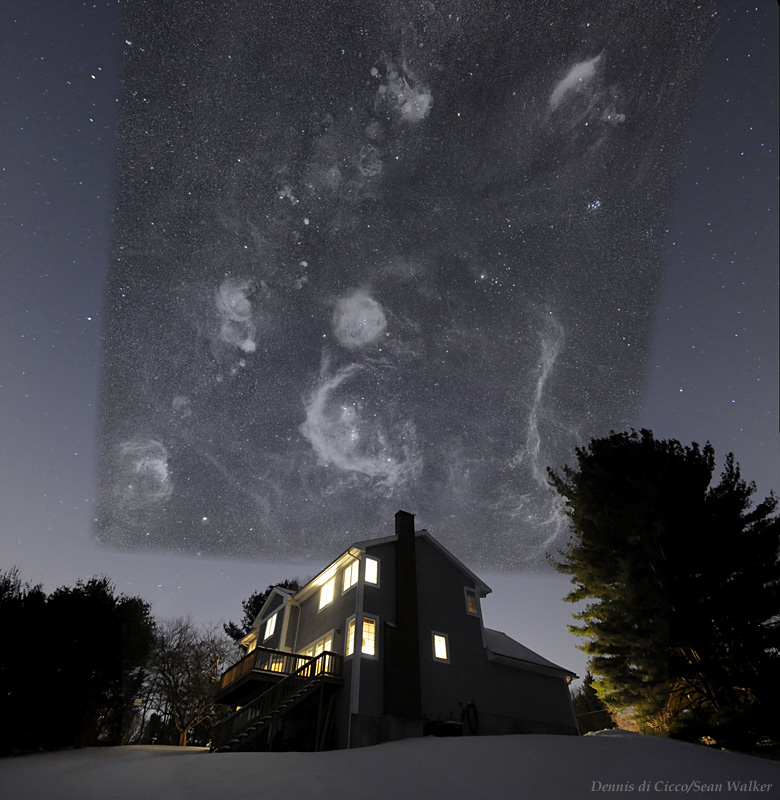Credit & Copyright: Dennis di Cicco (TWAN) & Sean Walker,
Skyandtelescope.com
Explanation:
Intricate, glowing nebulae that shine in planet Earth's
night sky are beautiful to look at in deep images
made with telescopes and sensitive cameras.
But they are faint and otherwise invisible to the naked-eye.
That makes their relative location and extent on the sky
difficult to appreciate.
So, consider
this impressive composite image of
a wide region of the northern winter sky.
With a total exposure time of 40 hours,
the painstaking mosaic presents a
nebula-rich expanse known as the Orion-Eridanus
Superbubble
above a house in suburban Boston, USA.
Within the wide and deep view are nebulae more often seen
in narrower views, including
the Great Orion Nebula,
the Rosette Nebula,
the Seagull Nebula,
the California Nebula,
and Barnard's Loop.
The familiar constellation of Orion itself is just above the
foreground house.
Brightest star Sirius is left of the roof, and the recognizable
Pleiades star cluster is above the tree at the right.
A version of the big picture that includes simple
constellation
guidelines is
available
here.
1999 2000 2001 2002 2003 2004 2005 2006 2007 2008 2009 2010 2011 2012 2013 2014 2015 2016 2017 2018 2019 2020 2021 2022 2023 2024 2025 |
Январь Февраль Март Апрель Май Июнь Июль Август Сентябрь Октябрь Ноябрь Декабрь |
NASA Web Site Statements, Warnings, and Disclaimers
NASA Official: Jay Norris. Specific rights apply.
A service of: LHEA at NASA / GSFC
& Michigan Tech. U.
|
Публикации с ключевыми словами:
nebula - Orion - Туманности межзвездные - Орион
Публикации со словами: nebula - Orion - Туманности межзвездные - Орион | |
См. также:
Все публикации на ту же тему >> | |
